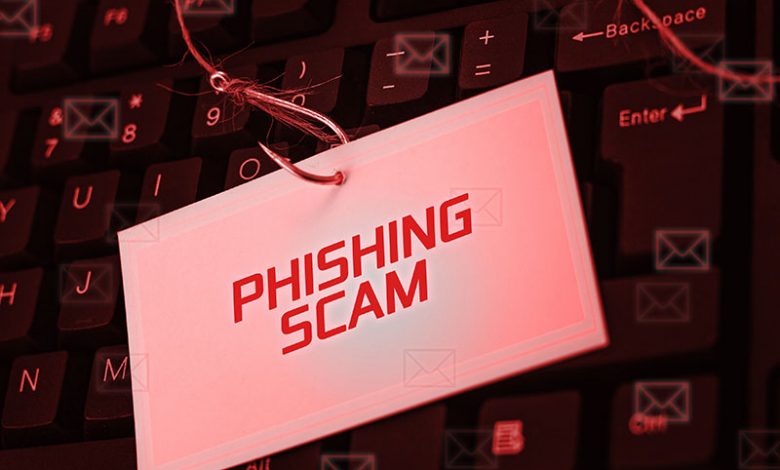
In our increasingly interconnected digital world, the threat of phishing scams has emerged as a pervasive and sophisticated form of cybercrime that targets individuals, organizations, and even governments. Phishing, a deceptive technique that relies on manipulation and social engineering, seeks to trick unsuspecting victims into divulging sensitive information, such as passwords, credit card details, or personal data. This insidious practice preys on human psychology and our trust in digital communication, often masquerading as legitimate entities to lure victims into its traps. As technology evolves, so do the tactics of phishers, making it imperative for individuals to be vigilant, educated, and equipped with strategies to detect and thwart these malicious attempts. We delve into the intricacies of phishing scams, uncovering their various forms, the tactics employed, and the measures that can be taken to safeguard against falling victim to these manipulative cyber threats.
Table of Contents
Impersonating Trusted Brands
Following the trust established by household names like United Airlines, Delta Airlines, Airbnb, Apple, and Walmart, fraudsters often impersonate these recognizable brands to lull their victims into a false sense of security before striking. By using the brand's name, logo, or other identifying information in their deceptive messages, scammers can make their fraudulent communications appear legitimate.
Here's how hackers impersonate trusted brands:
- Email and Domain Spoofing: Hackers manipulate the "From" field in email headers to make it appear that the message is coming from a legitimate source. The email might have a convincing sender name and address, making it difficult for recipients to detect its falseness. Hackers create domain names that closely resemble those of well-known brands. These slight variations can go unnoticed at a glance. For example, changing "paypal.com" to "paypa1.com."
- Phishing Websites: Hackers set up fake websites that replicate the appearance of legitimate ones. These websites often have URLs similar to genuine ones, making it challenging for victims to discern the difference.
- Social Engineering and Content Mimicry: Hackers gather information about the target, such as their interests, connections, and affiliations, from social media profiles. They then craft personalized messages that mirror the writing style and tone used by the legitimate brand in their communication and align with the target's interests to increase the likelihood of engagement.
- Cloned Logos, Designs, and Credential Harvesting: Hackers use stolen or replicated logos, images, and design elements from trusted brands to make their phishing emails and websites appear authentic. Next, they trick victims into visiting fake login pages where they enter their credentials, which the attackers then capture. The victims believe they are logging into a legitimate account.
- Urgent Requests: Hackers create a sense of urgency by sending messages that claim immediate action is needed to prevent negative consequences, such as account suspension or data loss. This urgency can prompt victims to react hastily.
- Email Account Compromise and Malware Distribution: Hackers gain unauthorized access to legitimate email accounts (including those of trusted brands) and send out phishing emails from those compromised accounts. Since the emails come from actual accounts, recipients are more likely to trust them. They may also include malicious attachments or links in their emails. When recipients click these links or download the attachments, malware is installed on their devices.
- HTTPS Certificates: Some hackers use counterfeit HTTPS certificates to make their fake websites appear secure. This can mislead victims into thinking they are interacting with a legitimate site.
Potential Cybercrime Threats
Once in possession of your PII, scammers can commit various cybercrimes. A frequent occurrence involves hacking into personal accounts, potentially leading to financial loss or even identity theft. Protecting your PII is crucial in the world of ever-evolving cybercrime threats.
One of the most common types of phishing scams involves the promise of free gifts or cash rewards. To claim these 'rewards,' recipients are typically asked to click on a link that leads to a fraudulent form or webpage. Once there, individuals may unknowingly reveal their PII, setting the stage for potential identity theft or other forms of cybercrime.
Travel-related phishing scams have escalated throughout the summer, with scammers frequently impersonating significant airlines and accommodation companies like United Airlines, Delta Air Lines, and Airbnb. These scams predominantly aim at the victims' desire for discounted travel or refunds from canceled flights or bookings, emphasizing the need for increased vigilance when managing travel arrangements online.
Popular Brand Impersonation Scams
The world of phishing scams is complex and varied, with different brands being impersonated to rob unsuspecting individuals of their sensitive information. Here is an overview of some brand impersonation scams that involve United Airlines, Delta Air Lines, Airbnb, Apple, and Walmart.
United Airlines Scam: False Free Tickets Through an Online Survey
A significant scam surfaced recently involving fraudsters impersonating United Airlines and offering free round-trip tickets to wherever customers wish to travel within the US. The deception revolves around the MileagePlus program, the airline's loyalty program. Scammers lure members with the promise of free tickets obtainable by completing an online survey. Remember, the survey link redirects to a fake United Airlines page to collect vital PII like credit card details and login credentials. Beware and do not fall for this scam!
Delta Air Lines Scam: A False $500 Offer in Travel Credit
A similar scam surrounds Delta Air Lines, another popular airline. In this scam, individuals are fooled with the offer of $500 in travel credit. As in the previous scheme, the fraudsters' primary objective is to trick you into disclosing sensitive information. Be wary of such too-good-to-be-true offers and always confirm their legitimacy before proceeding.
Fake Hotel Booking Scams: An Airbnb Scam
Hotel booking scams, like the one impersonating Airbnb, are also rampant in the world of phishing. In this scam, swathes of copycat hotel booking websites that mirror legitimate ones have been set up to trick travelers. These websites can be noticeably challenging to distinguish from their genuine counterparts, often requiring close scrutiny of their URLs to mark the difference. Always verify the URL before making any booking.
Walmart Scam: A False Free TV Offer
Scammers have not restricted themselves to airlines and hotels alone; retailers like Walmart are also being imitated. One recently spotted Walmart scam offers a free television to lure unsuspecting individuals. This scam aims to coax victims into divulging personal information like its predecessors. Always treat such incredible free offers with caution.
Apple Wallet Scam: Fake Security Update Texts
Scammers have also targeted Apple's user base with a fake Apple Wallet security update. This scam works by scaremongering you into believing that your Apple Wallet's security is compromised and an urgent update is required. Double-check these alarms directly with Apple before taking action, to prevent unknowingly falling into the scammers' trap.
Protecting Against Scams
Protecting yourself from phishing scams requires a combination of vigilance, education, and security practices. Here are some essential steps you can take to minimize the risk of falling victim to phishing scams:
- Be Cautious with Emails: Verify the sender's email address before taking action. Be wary of unsolicited emails, especially those with urgent or alarming subject lines. Don't click on links or download attachments from unknown or suspicious sources.
- Inspect URLs: Hover over email links to see the URL before clicking. Check for misspellings or unusual domain names. Ensure websites use "https" (secure) before entering personal information.
- Beware of Urgency and Pressure: Phishers often create a sense of urgency to rush you into making decisions without thinking. Avoid reacting hastily to emails that claim immediate action is required to avoid negative consequences.
- Educate Yourself: Stay informed about the latest phishing tactics and scams to recognize potential threats. Familiarize yourself with standard phishing techniques like email spoofing and deceptive URLs.
- Secure Your Accounts: Use strong, unique passwords for different accounts. Enable two-factor authentication (2FA) whenever possible to add an extra layer of security.
- Verify Requests for Personal Information: Legitimate organizations won't ask for sensitive information via email. If you receive a request for personal or financial details, contact the organization directly using the official contact information.
- Stay Skeptical of Unsolicited Communications: Be cautious of emails, messages, or calls asking for sensitive information or money. Independently verify the request through official channels before providing any information.
- Check for Spelling and Grammar Errors: Many phishing emails contain spelling mistakes and poor grammar.
- Install Security Software: Use reputable antivirus and antimalware software to detect and block malicious content.
- Update Software and Operating Systems: Keep your operating system, web browser, and security software up to date to benefit from the latest security patches.
Tips to Prevent Falling for Scams
While specialized software can provide excellent protection against scams, education and alertness are pivotal as the first lines of defense. The following tips elaborate on best practices that can help you avoid falling for scams.
- Double-check Sender's Mobile Number and Email Address. A practical, initial measure toward avoiding scams is to validate the sender's mobile number and email address meticulously. Even if they appear legit, double-check before taking any action. This step is crucial as scammers often impersonate reliable brands to trick you into trusting them.
- Use Only Official Websites and Apps. Always use only legitimate websites and apps for any online activities involving sensitive information. Illegitimate or dubious websites pose substantial threats, often aiming to steal PII. Pay close attention to the URL and any inconsistencies in the website's appearance.
- Take Immediate Action if PII is Accidentally Revealed. If you happen to disclose your PII inadvertently, it's imperative to take immediate action. Begin with changing your passwords promptly and notifying your bank and other relevant parties. Check for any leakages of your PII and secure your accounts using tools like Trend Micro ID Protection.
- Share Your Knowledge about Scams. Sharing knowledge and experience about scams helps everyone step up their guard against these ever-evolving threats. So, if you find information or an article that provides valuable insights into combating scams, consider sharing it with friends and family. Your initiative could potentially save them from falling victim to such scams.




